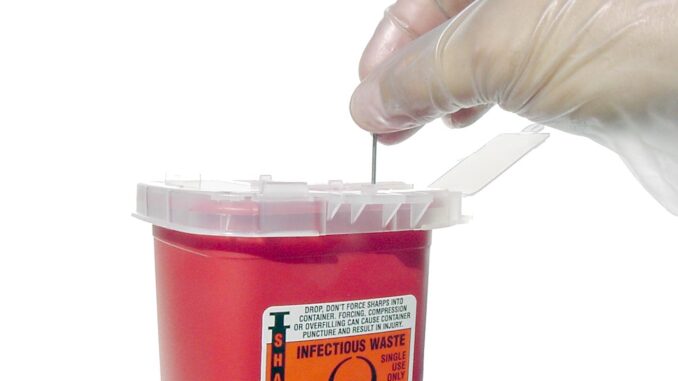
Once a person becomes aware that their establishment produces medical disposable products, the focus must turn to its effective management and disposal.
There are various methods available to treat medical waste to lessen its hazardous components. However, every form has its advantages and disadvantages. We recommend all professionals familiarize themselves with these basic methods to make the best choice:
- Incineration
The waste is burnt at temperatures of around 1000 degrees Celsius. The advantage is that it is easy and quick. The liability is the emission it produces.
- Autoclaving
Autoclaving refers to steam sterilization. It is less costly than incineration and has no adverse health effects to report. After autoclaving, the waste can be disposed of in a landfill. While suitable for over 90% of medical waste, it is not recommended for pathological, cytotoxic, or toxic chemical wastes.
- Gas Sterilization
The medical waste is introduced into an air-tight chamber. Sterilizing gases then come in contact with the material to kill the harmful agents. However, some of the gases like ethylene oxide are themselves highly toxic.
- Chemical Disinfection
Using chemical agents to disinfect can be a suitable method, especially for liquid wastes. Chlorine is especially popular. Using these chemicals require exact knowledge of the exposure time and mixing requirements. In addition, knowing about the biology of the present micro-organisms is paramount. Another way in which this method can be used is by grinding the medical waste. This ensures a higher surface area exposure to the chemical agent.
- Microwave
Shredded waste, mixed with water, can be heated to neutralize the biological agents. Shredding results in volume reduction of waste, and energy used is lesser than in an incinerator. Similar to autoclaving, 90% of medical waste can be treated with this method.
- Irradiation
This method uses exposure of the material to a cobalt source. Cobalt naturally is radioactive and gamma rays that come from it can destroy microbial agents in medical waste. However, cobalt is extremely expensive to procure and use and hence commercialization has been challenging. It is not advised for pathological wastes.
- Thermal Inactivation
When waste is heated to particular temperatures when infectious agents are killed, this process is known as thermal inactivation. This is especially effective for large volumes of liquid medical waste. A chamber is heated to a designated temperature and the waste is fed in and kept for a suitable time before release.
